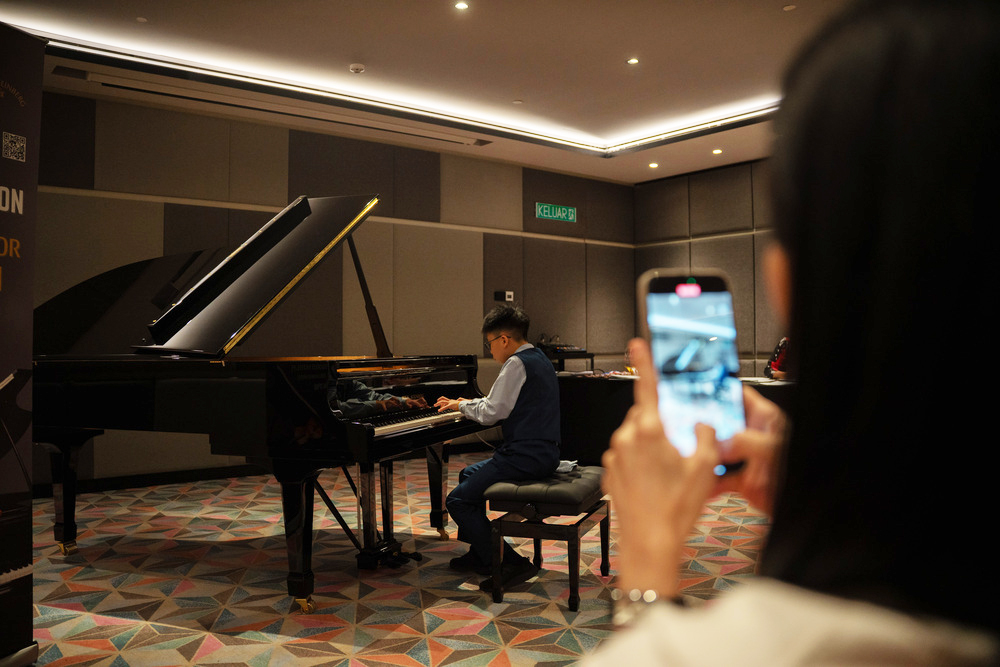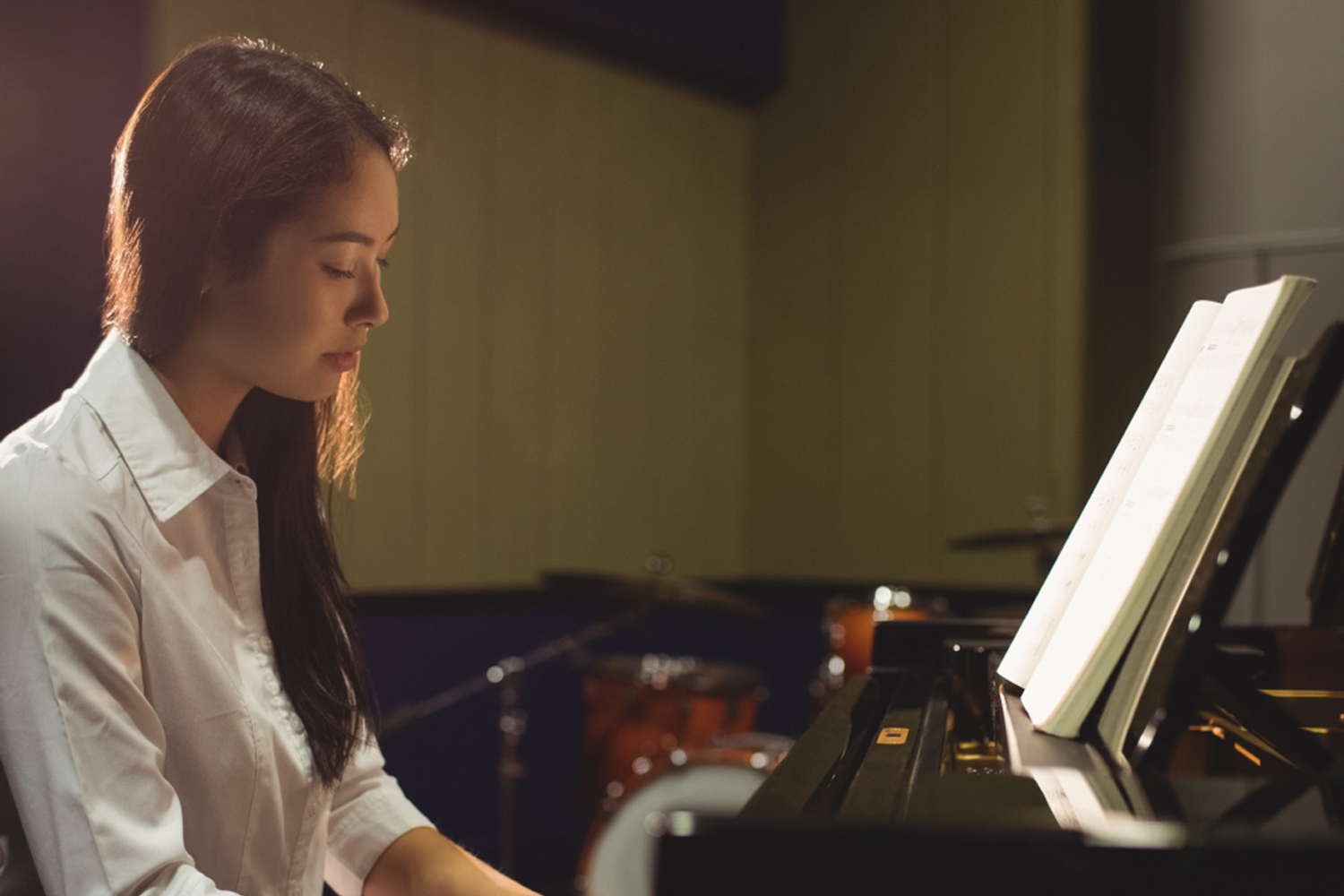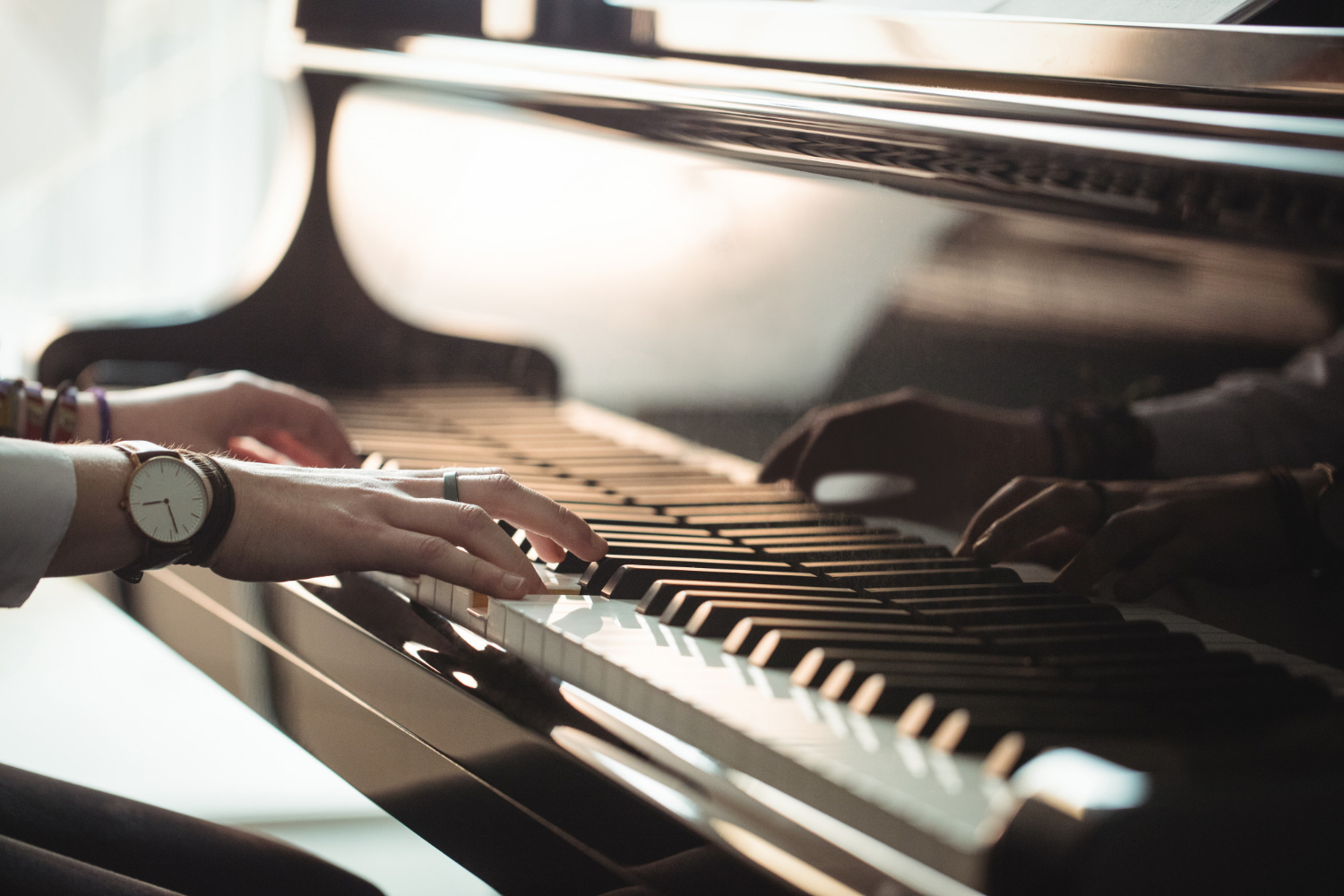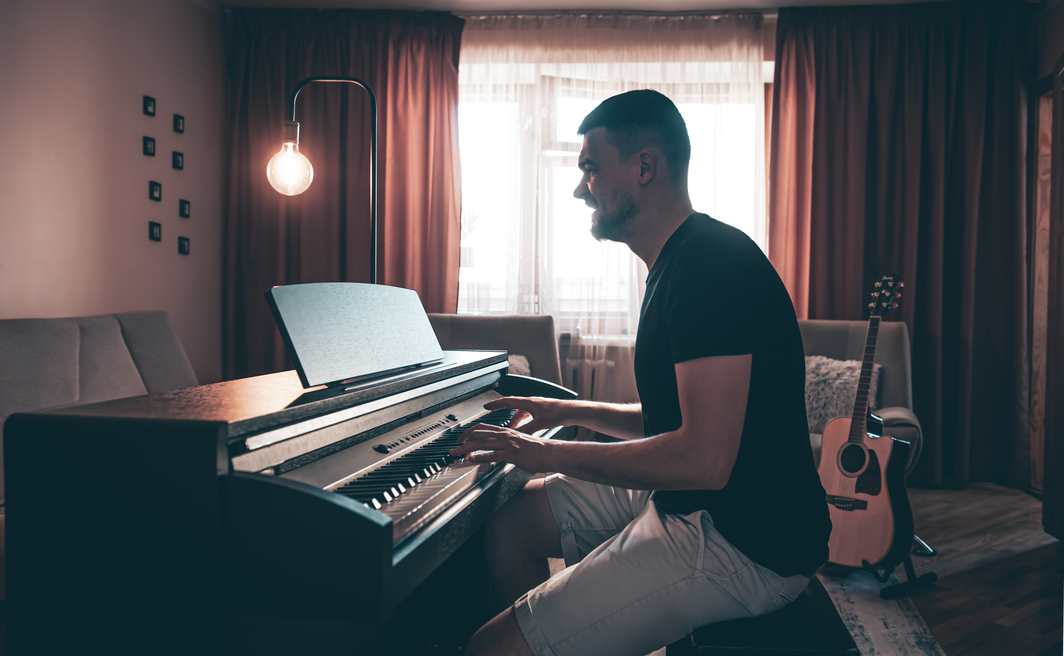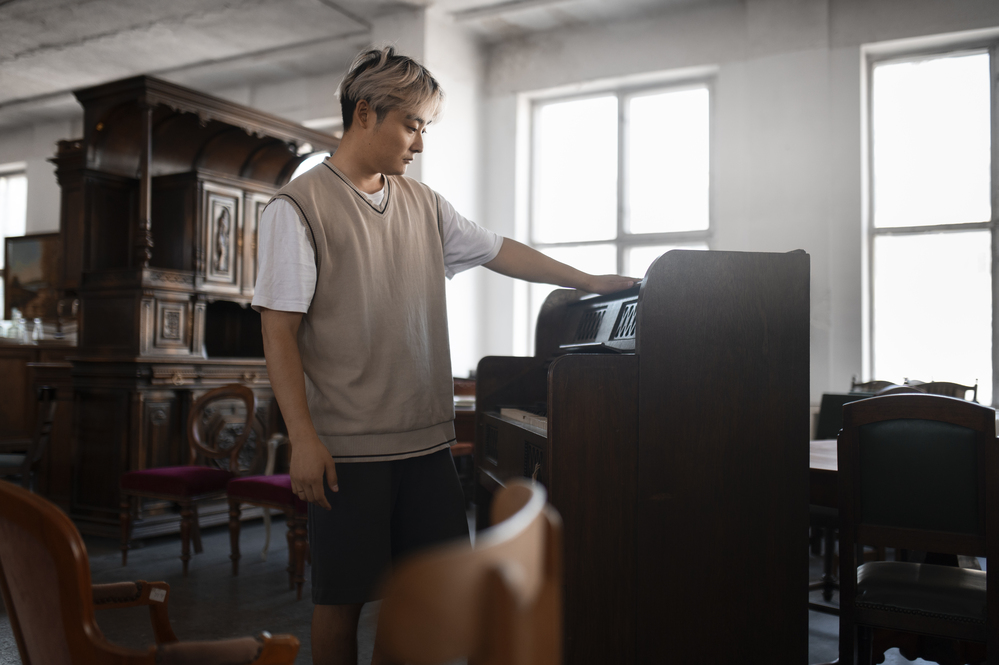
Introduction: The Big Question for Every Beginner
Every pianist remembers the first real decision that started it all — acoustic or digital?
It’s a question that sounds simple, but carries weight. The type of piano you begin with shapes how you play, how you listen, and even how you stay motivated to keep learning. Parents often wonder if a digital piano is “good enough” for lessons. Adult learners debate between the traditional charm of an upright and the convenience of a modern digital model.
The truth is, the “right” piano isn’t the most expensive or the most advanced — it’s the one that helps you want to play every day.
In this series, we’ll explore the core differences between acoustic and digital pianos — not only in sound and touch, but in how each supports your musical growth, long-term.
1. Understanding the Difference
Before choosing between acoustic and digital, it helps to understand how each instrument produces sound — and how that affects your playing experience.
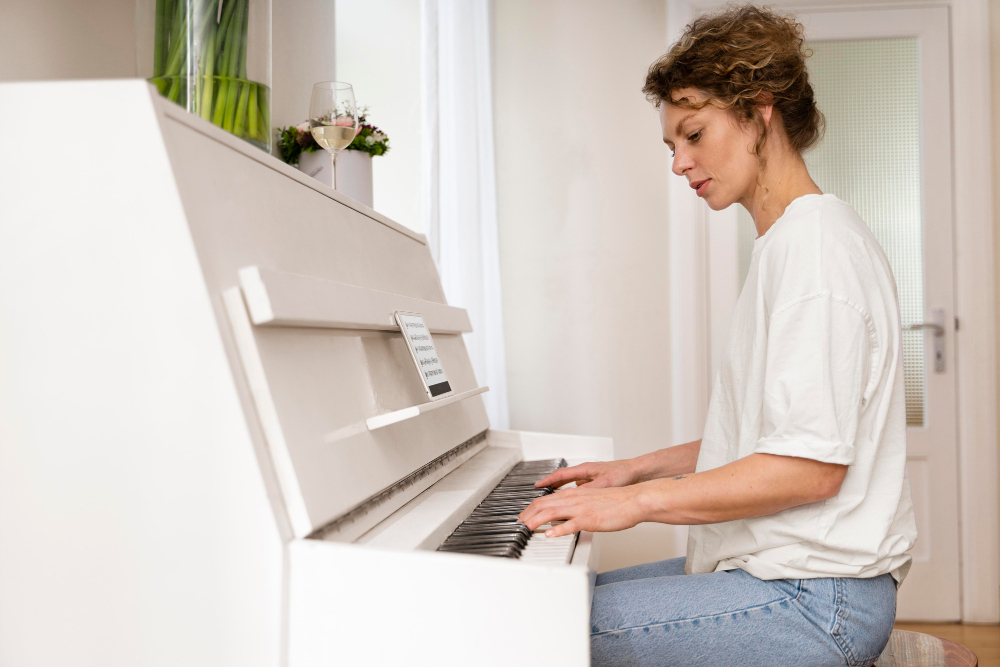
Acoustic Piano
An acoustic piano is a mechanical masterpiece. Every note you press sets a felt-covered hammer in motion, striking real strings that resonate through a wooden soundboard. This natural process creates layers of overtones and dynamics — subtle variations in tone that respond directly to your touch.
For students, this teaches a deeper awareness of touch control and tone colour. Acoustic pianos also age gracefully; the wood matures, and the sound develops richness over time.
Types of acoustic pianos
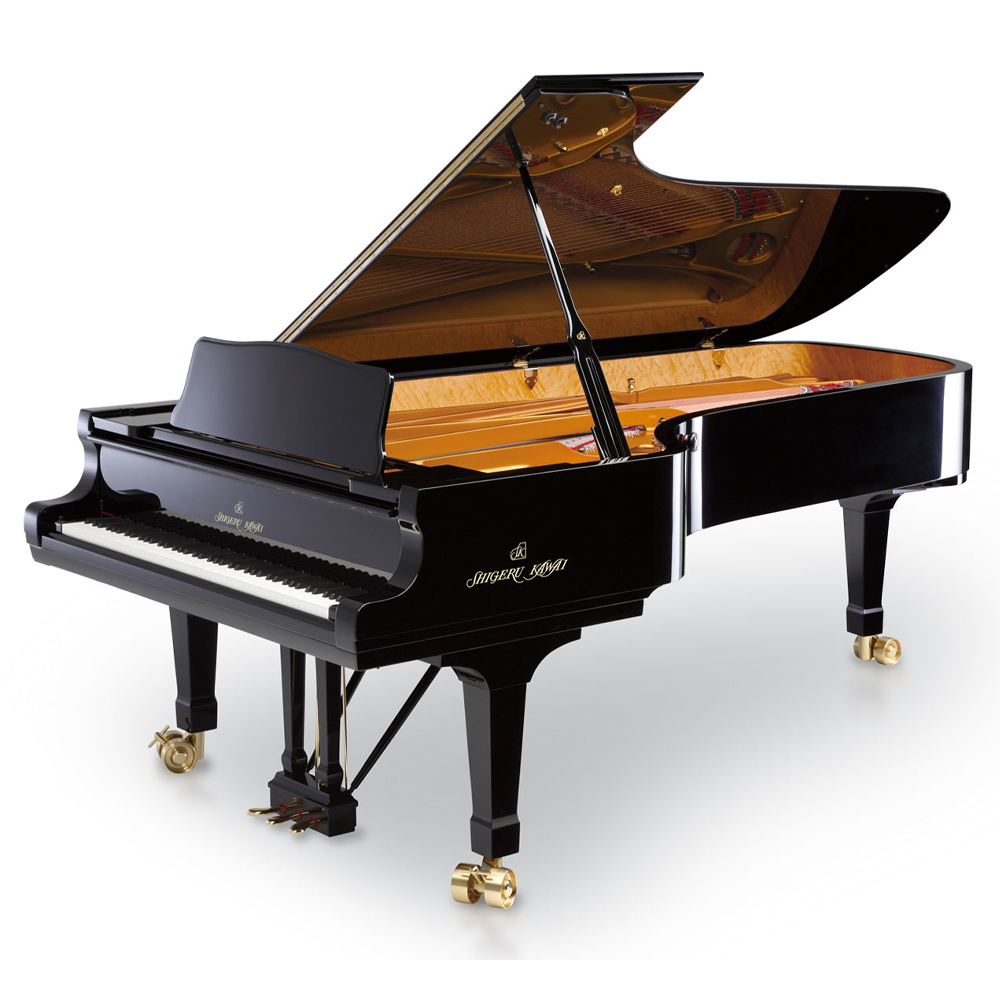
Grand Piano: Horizontal design for superior resonance and precision. Favoured by advanced players and performance spaces.
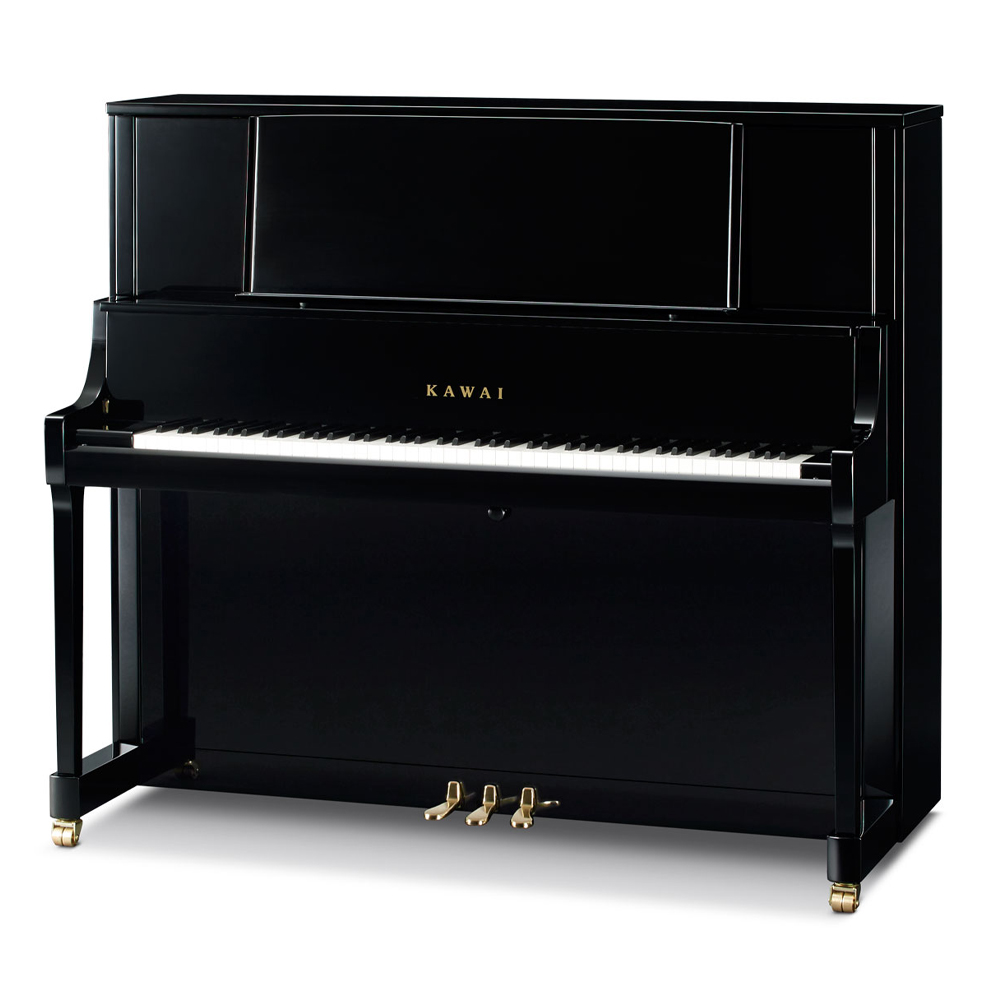
Upright Piano: Vertical strings for compact size, ideal for home practice and teaching studios.

Digital Piano
Digital pianos reproduce the sound of acoustic instruments using high-resolution sampling or sound modelling technology. Each key triggers a digitally recorded sound through built-in speakers. High-end models even simulate string resonance, damper noise, and key release — giving remarkable realism.
Most digital pianos today feature graded hammer action, meaning lower keys feel heavier than higher ones — closely imitating the mechanical resistance of a real piano. They also offer features like:
- Volume control & headphone use (perfect for late-night practice)
- Built-in metronome, recording, and app connectivity
- Portability — lighter and easier to maintain than an acoustic

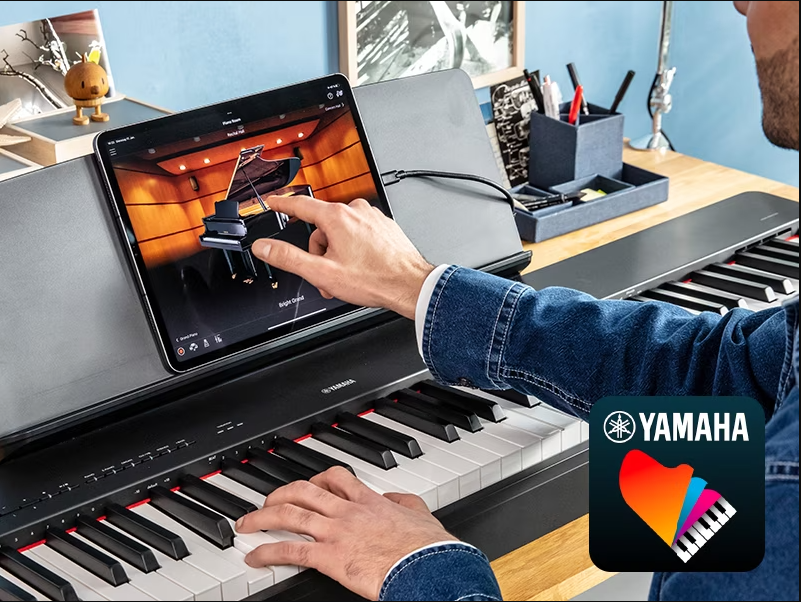
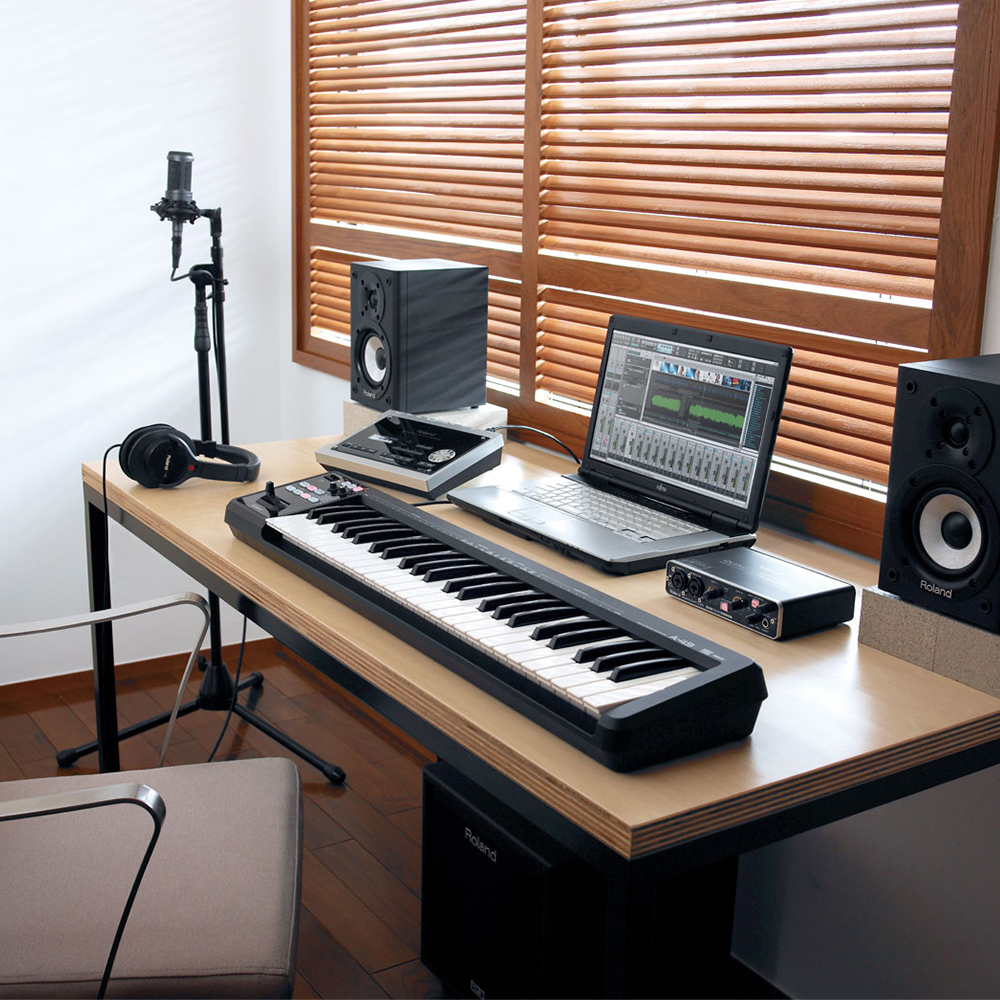
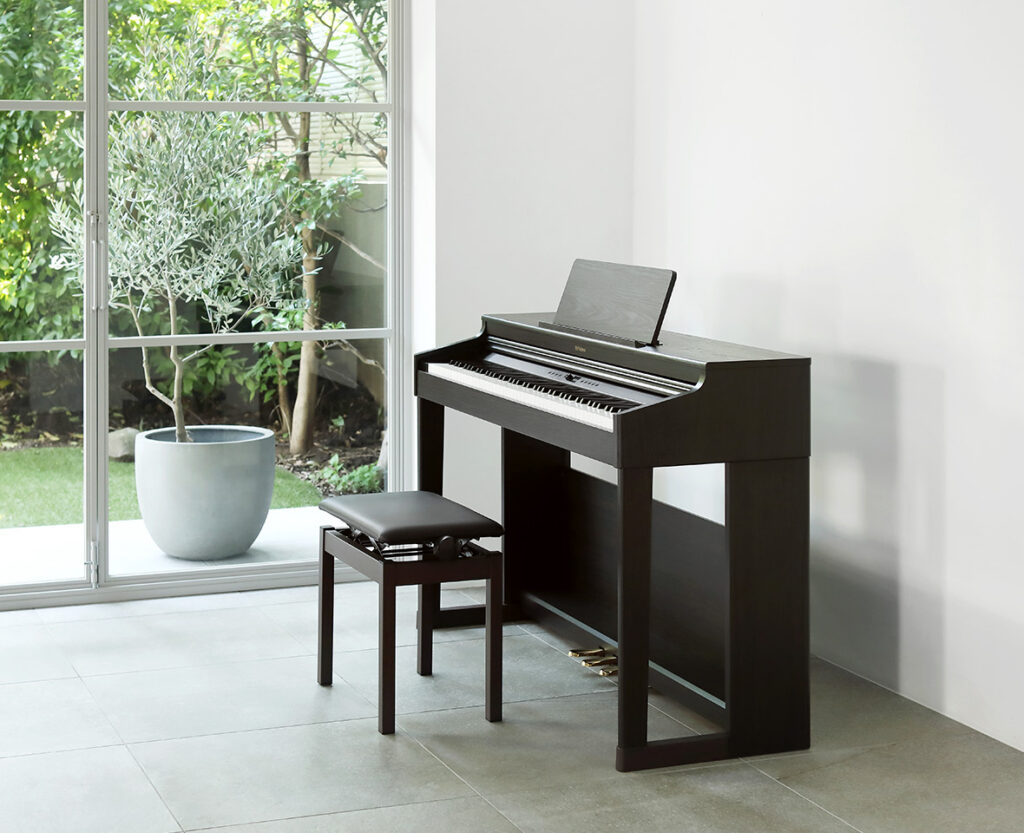
| Feature | Acoustic Piano | Digital Piano |
|---|---|---|
| Sound Production | Strings & soundboard resonance | Digital sampling or tone modelling |
| Touch | Real hammer mechanism | Weighted or graded hammer keys |
| Maintenance | Requires tuning & humidity control | No tuning; minimal upkeep |
| Volume | Fixed by playing dynamics | Adjustable; headphone option |
| Portability | Heavy, stationary | Lightweight, compact |
| Longevity | Decades with care | Limited by electronics |
| Price Range | Higher investment | Wider range; more affordable options |
Acoustic pianos offer authenticity; digital pianos provide flexibility. Choosing between them isn’t about which is better — it’s about which helps you play more, learn more, and enjoy more.
2. What Makes an Acoustic Piano Worth It
There’s a reason why the world’s greatest pianists — from concert performers to experienced teachers — still swear by an acoustic piano. The connection between finger, key, and sound is completely mechanical. Every tiny variation in pressure or speed changes the colour of your tone.
That sensitivity is what trains a pianist’s ear and touch. On an acoustic, you feel the resistance of the hammer and the vibration of the string through your fingertips. It encourages control, phrasing, and a natural musicality that digital instruments can only emulate.
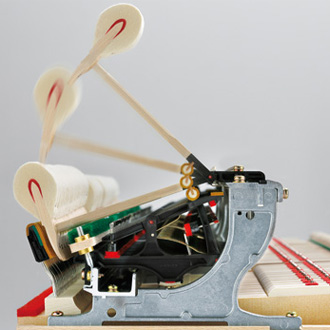
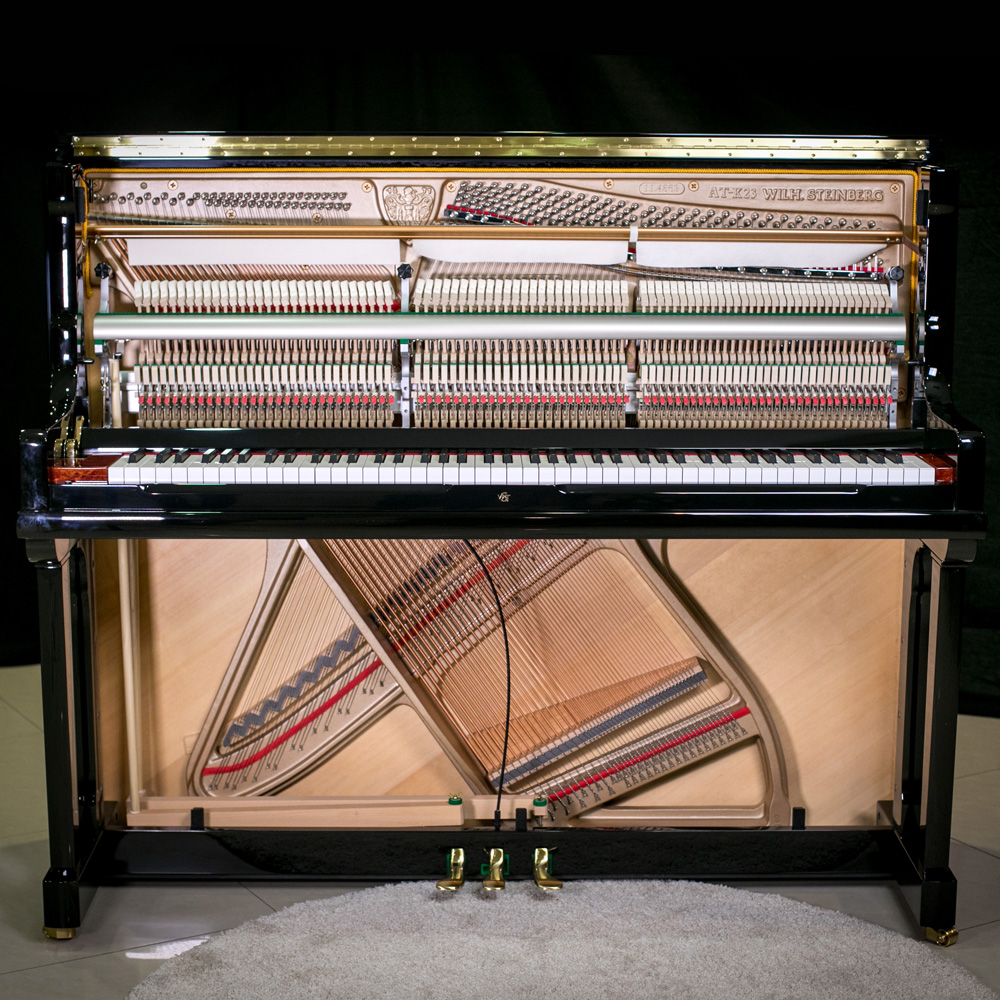
A well-built upright piano, like the Kawai K-Series or Wilh. Steinberg upright offers a full, resonant tone while remaining compact enough for most homes. For players pursuing classical repertoire or performance exams, an acoustic instrument develops better dynamic awareness and pedalling technique.
Maintenance is part of the ownership experience — regular tuning, humidity care, and occasional regulation — but these rituals also keep the instrument alive for decades. A properly maintained upright or grand can last generations, growing warmer and more characterful over time.
If your goal is to refine touch, expressiveness, or build long-term playing discipline, an acoustic piano will always give you more to discover.
3. When Digital Becomes the Smarter Choice
Digital pianos have evolved far beyond being “practice substitutes.” Modern models, especially those in the Mayga, Yamaha P-Series, or Kawai CN series, can simulate the tonal depth and graded key feel of an acoustic piano remarkably well.
For many learners and even teachers, the practicality is unbeatable:
- You can practice anytime with headphones.
- No tuning, no worry about humidity or moving heavy furniture.
- Easy recording, Bluetooth connectivity, and built-in rhythm tools for creative sessions.
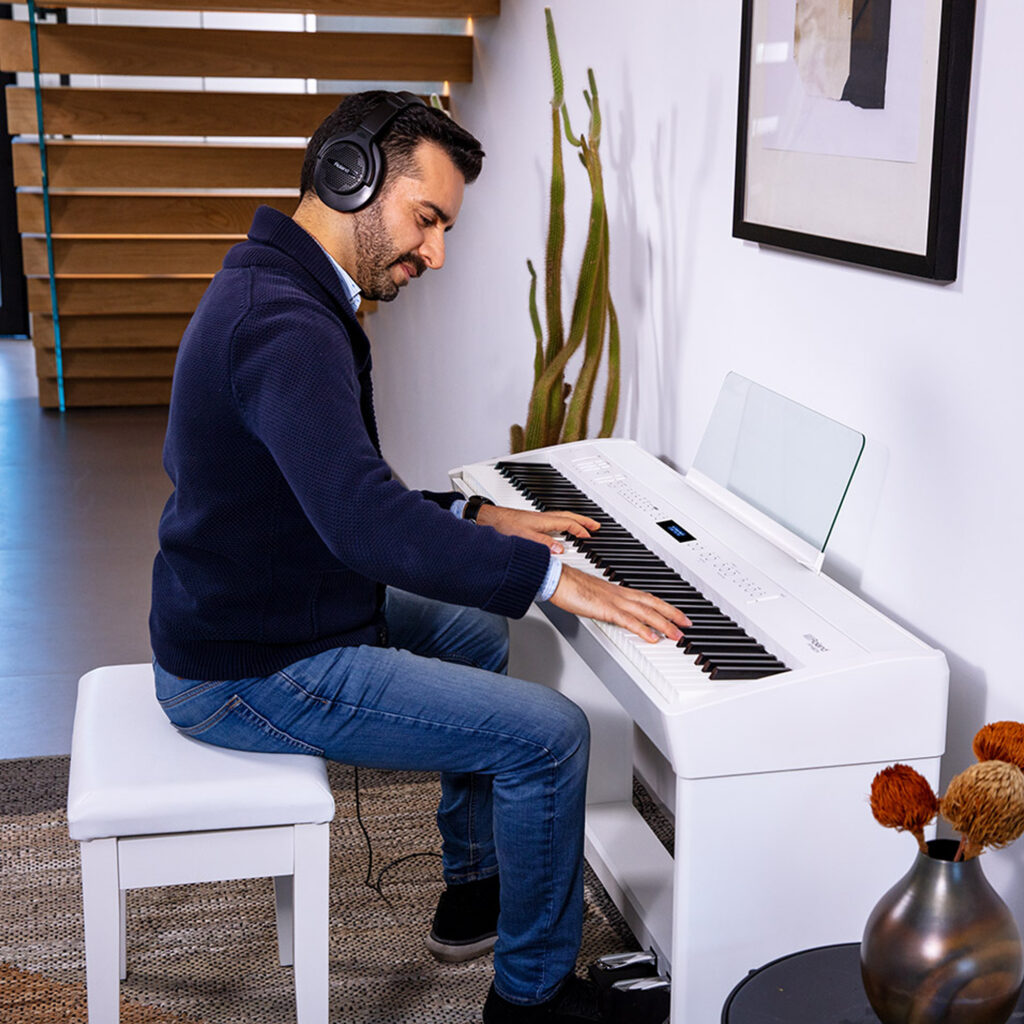
Digital pianos also offer consistent sound. Every key will respond identically, which helps early learners focus on notes and timing before developing nuanced tone control. And because they’re compact, they fit easily in modern apartments — or can travel between teaching studios and performances.
Some hybrids, like Kawai’s Novus or Yamaha’s AvantGrand, combine real hammer mechanisms with digital tone engines, offering the best of both worlds for advanced players who need both realism and convenience.
For those balancing practice with family, space, or shared living situations, digital pianos make it easier to keep playing — without compromise on quality or enjoyment.
So… Which Piano Should You Start With?
The right first piano isn’t defined by its price or prestige — it’s the one that fits your goals, lifestyle, and motivation.
If you’re studying for graded exams, taking formal lessons, or aiming to perform classical pieces, an acoustic piano provides the most rewarding foundation. Its responsiveness shapes your technique and ear in ways that translate naturally to higher-level playing.
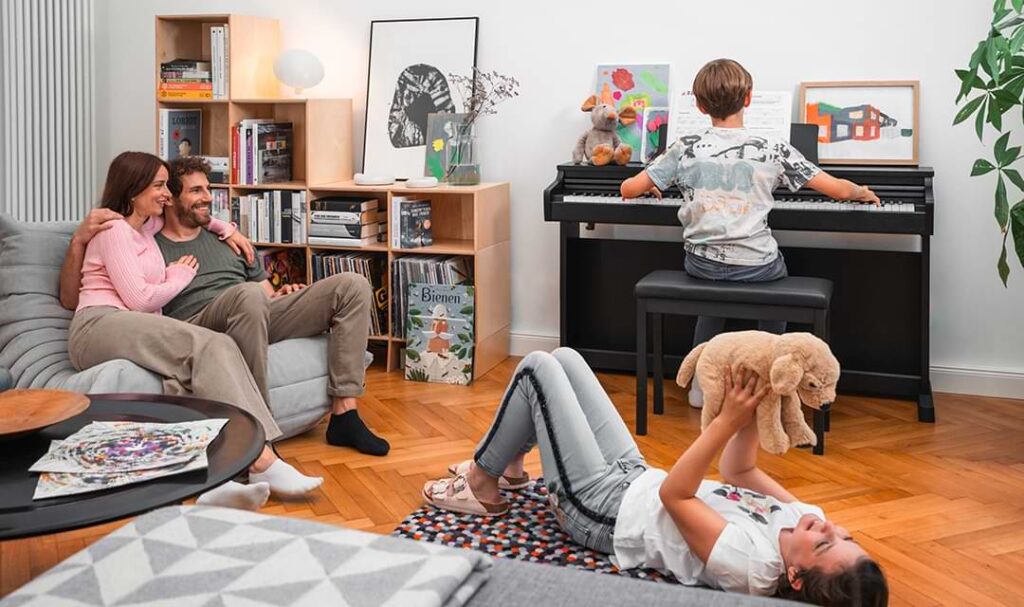
If your schedule is unpredictable, or you share your space with family or neighbours, a digital piano offers flexibility and control. You can practise quietly, record progress, and explore a wide range of sounds — all while maintaining realistic key action.
For many, the choice is a journey: starting with a digital model for convenience, then moving to an acoustic as their skill and commitment deepen.
Either way, the best decision is an informed one. Visit a piano showroom, try both types side by side, and trust your hands and ears. You’ll quickly know which one inspires you more.
Conclusion
Whether you’re drawn to the timeless resonance of an acoustic or the modern versatility of a digital, your first piano should reflect who you are as a musician — and who you aspire to become.
No two players share the same journey, but every great one begins with an instrument that feels right in both sound and spirit.
Music is meant to be enjoyed — and finding the right piano is the first step to that joy. Take your time to explore, compare, and discover what feels truly yours.
Warm regards,
Emusic Piano Team
P.S. In Part 2 of this series, we’ll look at how to choose your first piano based on how you’ll actually use it — from daily practice and exam prep to performance and composition.


